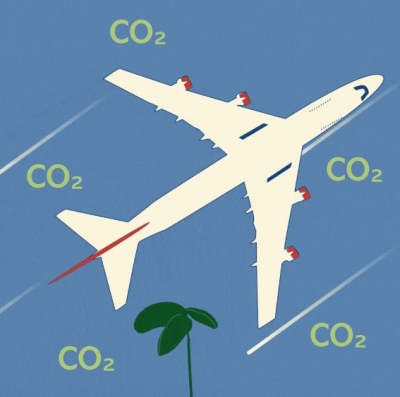
The impact of flying on climate change has been well established. On average, the aviation industry generates about 1 billion tons of CO2 worldwide every year. This number is comparable to that of Japan, which is the world’s third largest economy.
Add to this the fact that global emissions from flights have been increasing at the rate of 2.5% every year. In fact, over the next 30 years, the aviation industry will likely produce more CO2 than that of its whole history!
Radical solutions required
Even though fossil fuels are increasingly being replaced by renewable energy sources in power generation and electric vehicles continue to grow into a bigger market, there hasn’t been enough done to address pollution from aircraft. In such a climate, the need is for bold, radical solutions. Researchers from the University of California San Diego School of Global Policy and Strategy have called for the same through a new commentary article that appeared in Nature in September.
The authors suggest that the two most commonly proposed solutions-carbon offsetting and cleaner fuels – are rather inadequate. While offsetting falls flat owing to poor accountability, cleaner fuels can’t yet be produced sustainably in large volume and low costs to replace all jet fuel. Additionally, these two solutions do not address the dimate impact of contrails-clouds produced by aircraft engine edhaust – that can trap heat radiating from the Earth’s surface.
Three steps
To address a warming planet, the authors suggest three steps for the industry as a whole. Firstly, they recommend the industry and various governments to work together to be more aware of the risks involved and the role that aviation plays in the dimate crisis.
Next up, they wish for collaborations between the most motivated governments and firms to take risks on new technologies, which could then inspire others to follow their lead. The authors only provide examples such as a partnership between the Norwegian government and businesses to create electric airplanes, but also lay out strategies of how collaborations could be used to ignite other advances.
Finally, they stress the importance of research, not just to better understand contrails and chemical interactions in the atmosphere, but also to provide solutions. They envision these solutions to not just be technological, but also economic and political, thereby providing for a greener future.
Picture Credit : Google




